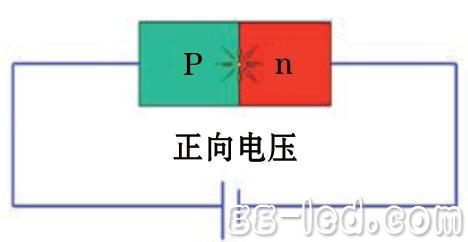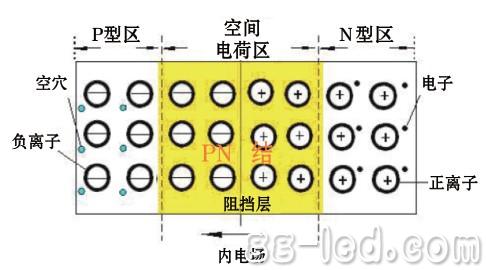LED chip and LED module for lighting
[Source: "High-tech LED - Technology and Applications" August issue of Yan Chongguang]
LED as a new generation of energy-saving, environmentally friendly, long-life lighting source has become the consensus of all mankind. With the significant price reduction of LED light sources, and the high integration of LED driver power supply chips, the cost of power supply is gradually reduced. Today, the retail price of affordable LED bulbs is close to the retail price of fluorescent energy-saving lamps of the same power. The pace of LED as the fourth-generation light source to replace incandescent lamps and fluorescent lamps is accelerating. It is becoming a reality that cheap LED lighting fixtures enter tens of thousands of ordinary people. If the government can supplement financial subsidies, the people will benefit earlier and earlier. Enjoy, make the society more energy efficient.
LED chip for lighting
Early LED chips could only be used as indicators for their low brightness. Today, the brightness of LED chips for lighting has met the technical standards of lighting fixtures, enough to replace incandescent and fluorescent energy-saving lighting.
The LED chip is actually a semiconductor PN junction, which is a light-emitting diode. Given a proper forward voltage and forward current, it will illuminate as shown in Figure 1. An LED light emitting diode is a junction type electroluminescent semiconductor device that converts an electrical signal into an optical signal.
1) LED chip working principle
The LED light-emitting diode chip is made of a III-IV compound such as GaAs (gallium arsenide), GaP (gallium phosphide), GaAsP (phosphorus gallium arsenide) and the like, and its core is a PN junction. Therefore, it has the IN characteristic of a general PN junction, that is, forward conduction, reverse cutoff, and breakdown characteristics. The LED light-emitting diode consists of a P zone and an N zone (Fig. 2 left). The junction of the two regions is a PN junction (Fig. 2 right), the P region has electrons, and the N region has holes. The PN junction generates an internal electric field, and under certain conditions, it has a light-emitting characteristic. If a forward voltage is applied across the LED light-emitting diode, electrons are injected into the P region from the N region, and holes are injected into the N region from the P region. A part of the minority carriers entering the other region is combined with the majority of the carriers in the PN intersection plus electric field to emit light, and the internal electron movement when the LED emits light is as shown in FIG.
Figure 1 LED light-emitting diode

LED as a new generation of energy-saving, environmentally friendly, long-life lighting source has become the consensus of all mankind. With the significant price reduction of LED light sources, and the high integration of LED driver power supply chips, the cost of power supply is gradually reduced. Today, the retail price of affordable LED bulbs is close to the retail price of fluorescent energy-saving lamps of the same power. The pace of LED as the fourth-generation light source to replace incandescent lamps and fluorescent lamps is accelerating. It is becoming a reality that cheap LED lighting fixtures enter tens of thousands of ordinary people. If the government can supplement financial subsidies, the people will benefit earlier and earlier. Enjoy, make the society more energy efficient.
LED chip for lighting
Early LED chips could only be used as indicators for their low brightness. Today, the brightness of LED chips for lighting has met the technical standards of lighting fixtures, enough to replace incandescent and fluorescent energy-saving lighting.
The LED chip is actually a semiconductor PN junction, which is a light-emitting diode. Given a proper forward voltage and forward current, it will illuminate as shown in Figure 1. An LED light emitting diode is a junction type electroluminescent semiconductor device that converts an electrical signal into an optical signal.
1) LED chip working principle
The LED light-emitting diode chip is made of a III-IV compound such as GaAs (gallium arsenide), GaP (gallium phosphide), GaAsP (phosphorus gallium arsenide) and the like, and its core is a PN junction. Therefore, it has the IN characteristic of a general PN junction, that is, forward conduction, reverse cutoff, and breakdown characteristics. The LED light-emitting diode consists of a P zone and an N zone (Fig. 2 left). The junction of the two regions is a PN junction (Fig. 2 right), the P region has electrons, and the N region has holes. The PN junction generates an internal electric field, and under certain conditions, it has a light-emitting characteristic. If a forward voltage is applied across the LED light-emitting diode, electrons are injected into the P region from the N region, and holes are injected into the N region from the P region. A part of the minority carriers entering the other region is combined with the majority of the carriers in the PN intersection plus electric field to emit light, and the internal electron movement when the LED emits light is as shown in FIG.
Figure 1 LED light-emitting diode
 Â Â Â Â Â Â
     Â
Figure 2 PN junction internal structure 
Figure 3 Internal electronic motion when LED is illuminated

(unfinished)
For more details, please refer to the August issue of "High-tech LED-Technology and Applications"

Dispensing Pot,Epoxy Dispensing Pot,Automatic Epoxy Resin Potting Machine,Automatic Ab Epoxy Dispensing Potting Machine
Zhijiang BSL battery technology service company , https://www.bslbatteryservice.com